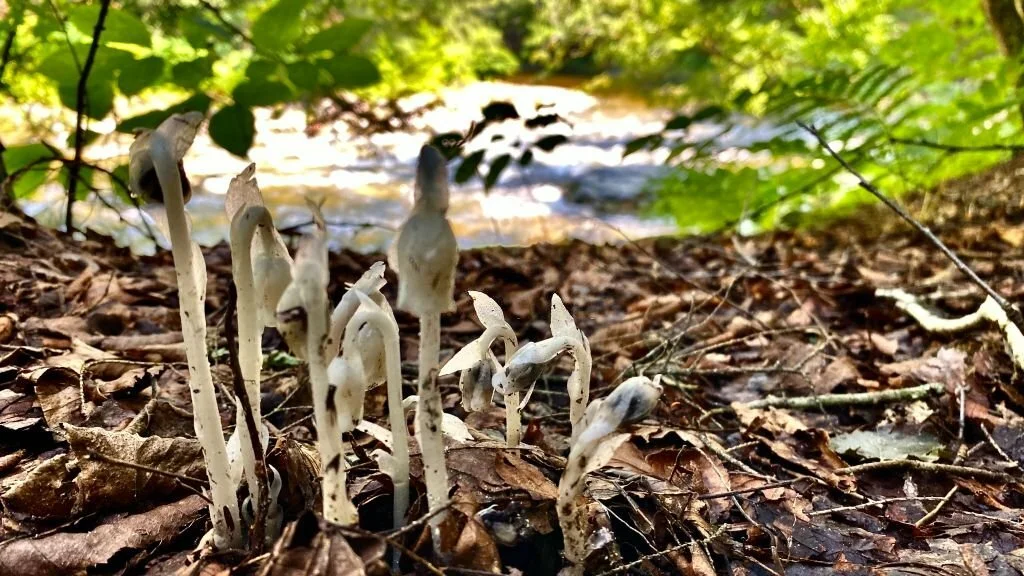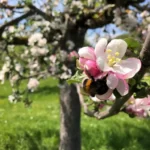Ghost pipe, scientifically known as Monotropa uniflora, is a captivating and enigmatic plant that has long held a special place in the world of herbal medicine. Its ghostly, translucent appearance and intriguing growth characteristics have earned it the name “Indian pipe” or “corpse plant”. This unique, non-photosynthetic herb has a rich history of use in traditional medicine, particularly among indigenous cultures in North America.
In this article, we will delve into the world of ghost pipe and explore how to make a tincture from this extraordinary plant. Ghost pipe’s mystical aura is not only a subject of fascination but also holds the promise of potential therapeutic benefits. We aim to provide a comprehensive guide, from understanding the plant’s medicinal uses to responsible gathering and preparation. By the end of this journey, you will be equipped with the knowledge and skills to create your very own ghost pipe tincture—a valuable addition to your herbal remedy toolkit.
Ghost Pipe and Its Medicinal Uses
Ghost pipe, Monotropa uniflora, is a fascinating and unusual member of the plant kingdom. Its most distinctive feature is its lack of chlorophyll, rendering it completely white and translucent. This ghostly appearance and its ability to grow in deep shade have contributed to its mystique.
Throughout history, indigenous peoples in North America have recognized the medicinal potential of ghost pipe. It has been used traditionally for a variety of purposes, including pain relief and muscle relaxation. Some believe it can be beneficial for those with conditions related to inflammation and discomfort.
However, it’s essential to approach the use of ghost pipe with respect and responsibility. Harvesting should be conducted ethically and sustainably, as overharvesting can negatively impact this unique plant’s populations.
Gathering and Preparing Ghost Pipe
Harvesting ghost pipe should be approached with care and respect for the plant and its habitat. Here are some key steps to consider when gathering and preparing ghost pipe for tincture-making:
- Ethical Harvesting: It is crucial to practice ethical and sustainable harvesting of ghost pipe. Never uproot the entire plant, as this can be detrimental to its survival. Instead, carefully harvest a portion of the above-ground plant, leaving the roots undisturbed.
- Timing: The timing of your harvest is important. Ghost pipe is typically harvested during its flowering stage. This is when the plant’s medicinal compounds are believed to be most potent.
- Cleaning and Drying: After harvesting, gently clean the ghost pipe by removing any dirt or debris. Allow the plant material to air-dry thoroughly in a well-ventilated area. Proper drying helps prevent mold and decay.
By following these steps, you can ensure that your ghost pipe is harvested ethically and prepared for the tincture-making process. Responsible harvesting practices are essential for preserving this unique and valuable plant.
Materials and Equipment Needed
Creating a ghost pipe tincture requires specific materials and equipment to ensure safety and effectiveness. Here’s what you’ll need:
- Ghost Pipe: The harvested and dried ghost pipe plant material is the primary ingredient for the tincture. Ensure it is clean and free of contaminants.
- Glass Jars: Choose glass jars with a tight-sealing lid. These should be clean and sterilized to prevent contamination.
- Alcohol: High-proof alcohol, such as vodka or grain alcohol, is used as the solvent to extract the medicinal compounds from the ghost pipe. Ensure it is food-grade and of the highest proof available.
- Labels: You’ll need labels to mark your tincture jars with essential information, including the plant used, alcohol content, and the date of preparation.
Tincture-Making Process
Making a ghost pipe tincture involves a careful and systematic process to ensure the extraction of medicinal compounds. Here’s a step-by-step guide:
- Measure and Prepare: Measure the dried ghost pipe plant material and place it in a glass jar. The amount will depend on your recipe, but a common ratio is about 1 part dried ghost pipe to 2 parts alcohol.
- Add Alcohol: Pour the high-proof alcohol into the jar, covering the ghost pipe completely. Seal the jar tightly.
- Maceration: Allow the mixture to macerate or steep for a specific duration. The maceration time can vary, but it’s commonly around 4-6 weeks. During this period, store the jar in a cool, dark place, away from direct sunlight.
- Regular Agitation: During the maceration period, gently shake or stir the jar every few days. This agitation helps extract the medicinal compounds from the ghost pipe.
- Monitor and Taste: Regularly monitor the tincture’s progress. You can taste it occasionally to gauge its potency. When you’re satisfied with the flavor and potency, it’s time to move on to the next steps.
Straining and Storing the Tincture
Once the maceration process is complete, it’s time to strain and store your ghost pipe tincture. Here’s how:
- Straining: Use a fine mesh strainer or cheesecloth to strain the tincture into a clean glass jar. This step removes the plant material, leaving a clear liquid.
- Storage Container: Transfer the strained tincture into amber glass bottles with tight-sealing caps. Amber glass helps protect the tincture from light, which can degrade its quality.
- Labeling: Label each bottle with essential information, including the plant used (ghost pipe), the alcohol content, and the date of preparation. Proper labeling is crucial for future use and safety.
- Storage: Store your ghost pipe tincture in a cool, dark place. Properly stored tinctures can have a long shelf life.
By following these steps, you can successfully create your ghost pipe tincture, harnessing the medicinal properties of this unique plant for your herbal medicine needs. However, it’s essential to use your ghost pipe tincture responsibly and in consultation with a healthcare professional, as herbal remedies can have interactions and side effects.
Dosage and Usage
Using your ghost pipe tincture responsibly is vital for reaping its potential benefits while avoiding adverse effects. Here’s a guide to dosage and usage:
- Start Low and Go Slow: Begin with a low dose, such as a few drops, to assess your individual tolerance and response. Slowly increase the dose over time if necessary, but never exceed the recommended maximum dose.
- Frequency: The frequency of use can vary depending on your specific needs. Some individuals may take the tincture daily, while others may use it as needed for specific concerns.
- Application: Ghost pipe tincture can be taken orally by placing the desired number of drops under the tongue and holding them for a moment before swallowing. Alternatively, it can be diluted in water or another beverage for consumption.
- Consult a Professional: It’s highly recommended to consult with a healthcare professional or herbalist for personalized dosage recommendations. They can consider your individual health and medical history when advising on the proper use of the tincture.
Safety and Considerations
While ghost pipe tincture can offer potential therapeutic benefits, there are important safety considerations to keep in mind:
- Responsible Harvesting: Always practice ethical and sustainable harvesting of ghost pipe to protect its populations and ecosystems.
- Ethical Sourcing: Ensure that the ghost pipe you use is sourced from reliable and ethical suppliers, especially if you did not harvest it yourself.
- Potential Interactions: Be aware that herbal remedies, including ghost pipe, may interact with medications or medical conditions. If you have underlying health concerns or are taking medications, consult a healthcare professional before using the tincture.
- Pregnancy and Lactation: Ghost pipe’s safety during pregnancy and lactation is not well-documented. It’s advisable for pregnant or breastfeeding individuals to avoid its use unless under the guidance of a qualified healthcare provider.
- Allergic Reactions: Some individuals may experience allergic reactions to herbal tinctures. If you notice any adverse effects, discontinue use and seek medical advice.
Conclusion
Creating a ghost pipe tincture can be a rewarding endeavor, as it allows you to explore the potential benefits of this unique plant in herbal medicine. However, it’s essential to approach ghost pipe and its tincture with caution and respect. The process of harvesting, preparing, and using this herbal remedy should be undertaken responsibly and ethically.
By understanding the plant, its medicinal uses, and the tincture-making process, you can create a valuable addition to your herbal medicine toolkit. Remember to consult with healthcare professionals for personalized guidance and ensure that the use of ghost pipe tincture aligns with your individual health and wellness goals.
The world of herbal remedies is rich and diverse, offering various potential solutions for health and well-being. Ghost pipe tincture is just one example of the fascinating possibilities that nature provides. As you explore this world, always prioritize safety, ethical practices, and informed decision-making, ensuring that your journey into herbal medicine is both rewarding and responsible.



